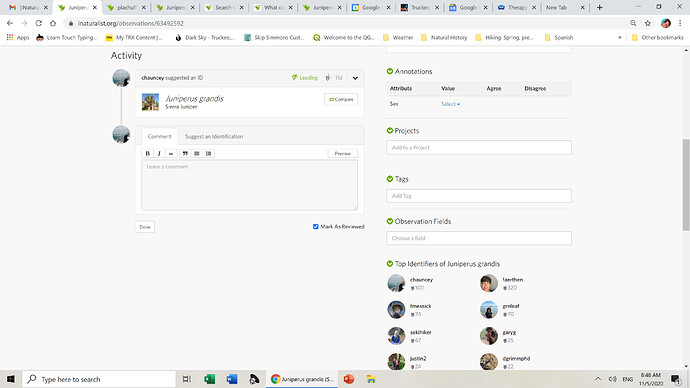for example:
This shows chauncey with 1011 identifications of J. grandis.
Go to taxon information page:
This shows chauncey with 542 observations and 654 identifications.
I’m perplexed. What am I missing?
Thanks for your help.
Platform PC, website
Browser, Chrome

